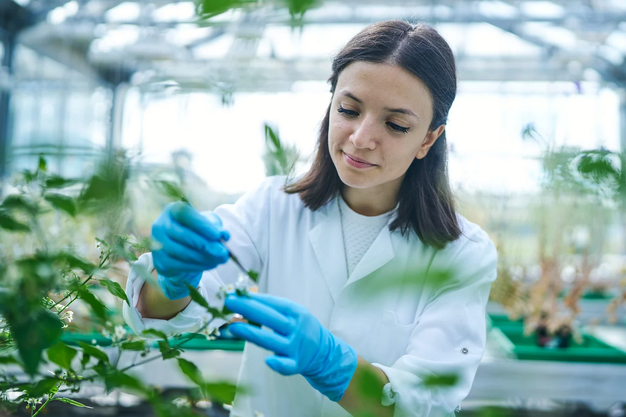Steroidal glycoalkaloids are already known to be important plant defense substances. They are toxic compounds typical of solanaceous plants and are also found in potatoes, tomatoes, and aubergines. However, their toxicity can be significantly reduced in crops by peeling, cooking, or frying.
In tomatoes, the glycoalkaloids are broken down during ripening, so they are barely detectable in the red fruit. However, the ecological role of steroidal saponins in Solanum nigrum leaves was so far unknown. A key clue came from the greenhouse team, who noticed that GAME15 knockout plants, which are unable to produce saponins, were more susceptible to insect herbivores than wild-type plants. Intrigued by this observation, the researchers carried out ecological experiments in the form of feeding trials with two natural Solanum pests.
"In a first experiment, two herbivores, the leafhopper Empoasca decipiens, and the Colorado potato beetle Leptinotarsa decemlineata, were given a choice between leaves of wild-type plants (which produce steroidal saponins) and leaves of Game15 knockout plants (which do not produce saponins due to the knockout of the GAME15 gene). After a week, we measured the damage caused by the insects. The results clearly showed that both herbivore species fed almost exclusively on the knockout leaves, showing a preference for them over the wild-type leaves. In a second experiment, we use a "forced-feeding" bioassay, specifically with Colorado potato beetles. In this test, we placed individual beetles with detached leaves from either wild-type or knockout plants. After just six hours, the beetles readily fed on the knockout leaves lacking steroidal saponins, while they largely avoided the wild-type leaves, apparently preferring to starve rather than feed," says Marianna Boccia, describing the first evidence for the role of steroidal saponins in plant defense.
 Marianna Boccia
Marianna Boccia
One possible explanation for the different groups of compounds in leaves and berries is that these compounds are specialized to protect different plant tissues. Leaves are more likely to be attacked by herbivores, while berries are more susceptible to pathogens.
Boccia, M., Kessler, D., Seibt, W., Grabe, V., Rodríguez López, C. E., Grzech, D., Heinicke, S., O'Connor, S. E., Sonawane, P. D.
A scaffold protein manages the biosynthesis of steroidal defense metabolites in plants
Science, doi:10.1126/science.ado3409
